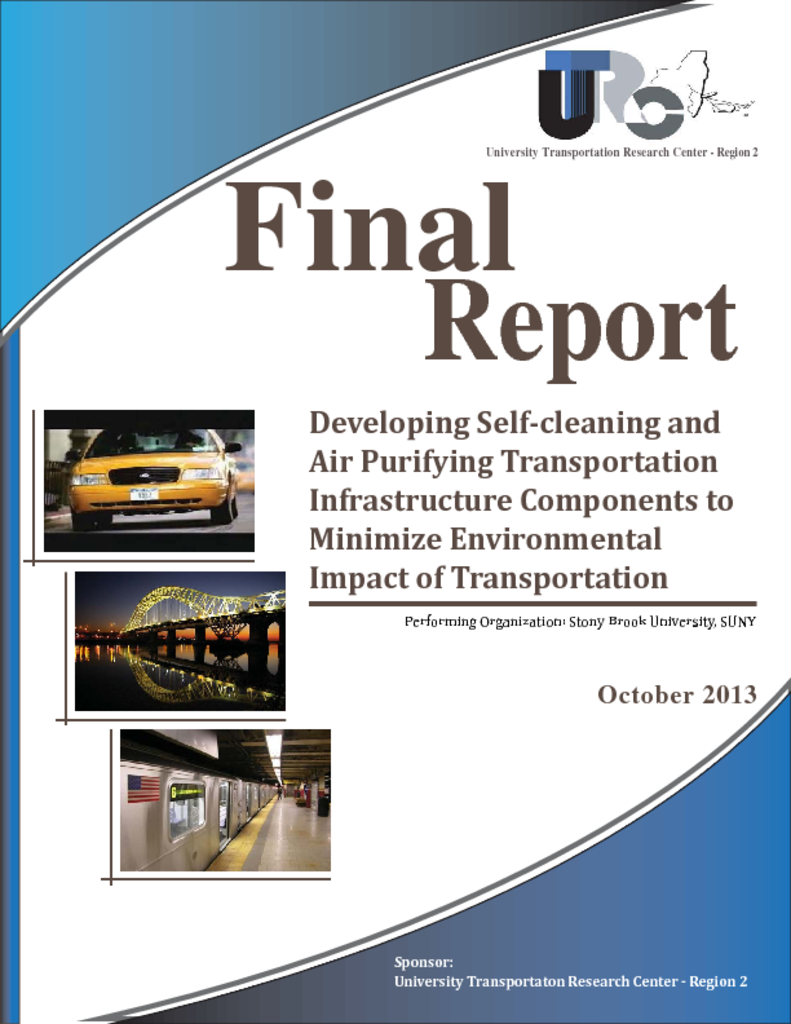Creating transportation infrastructure, which can clean up itself and contaminated air surrounding it, can be a groundbreaking approach in addressing environmental challenges of our time. This project has explored a possibility of depositing coatings on the existing materials to address a feasibility of this approach. More specifically, we have quantified the rates of removal of pollutants from the air by a new generation of coatings, which can be applied on any architectural elements and transportation infrastructure. We have also used indicators synthesized in our lab to demonstrate the self-cleaning properties of these now commercially available coatings. In addition, we have worked with the company pioneering this technology in the US and Europe to scope the new application of this technology. The survey of the existing and future commercial projects has indicated that this technology is already leading to very exciting applications in transportation sector, where concrete, asphalt, steel, glass and masonry surfaces will become green and sustainable interfaces mitigating the environmental and health impacts of transportation. The results obtained in this project have a significant relevance to the USDOT goals, such as development of livable communities by providing an access to environmentally sustainable travel options. Moreover, it has also relevance to another DOT goal focused on environmental sustainability, where self-cleaning properties of the coatings have a potential to improve both energy and water conservation.


